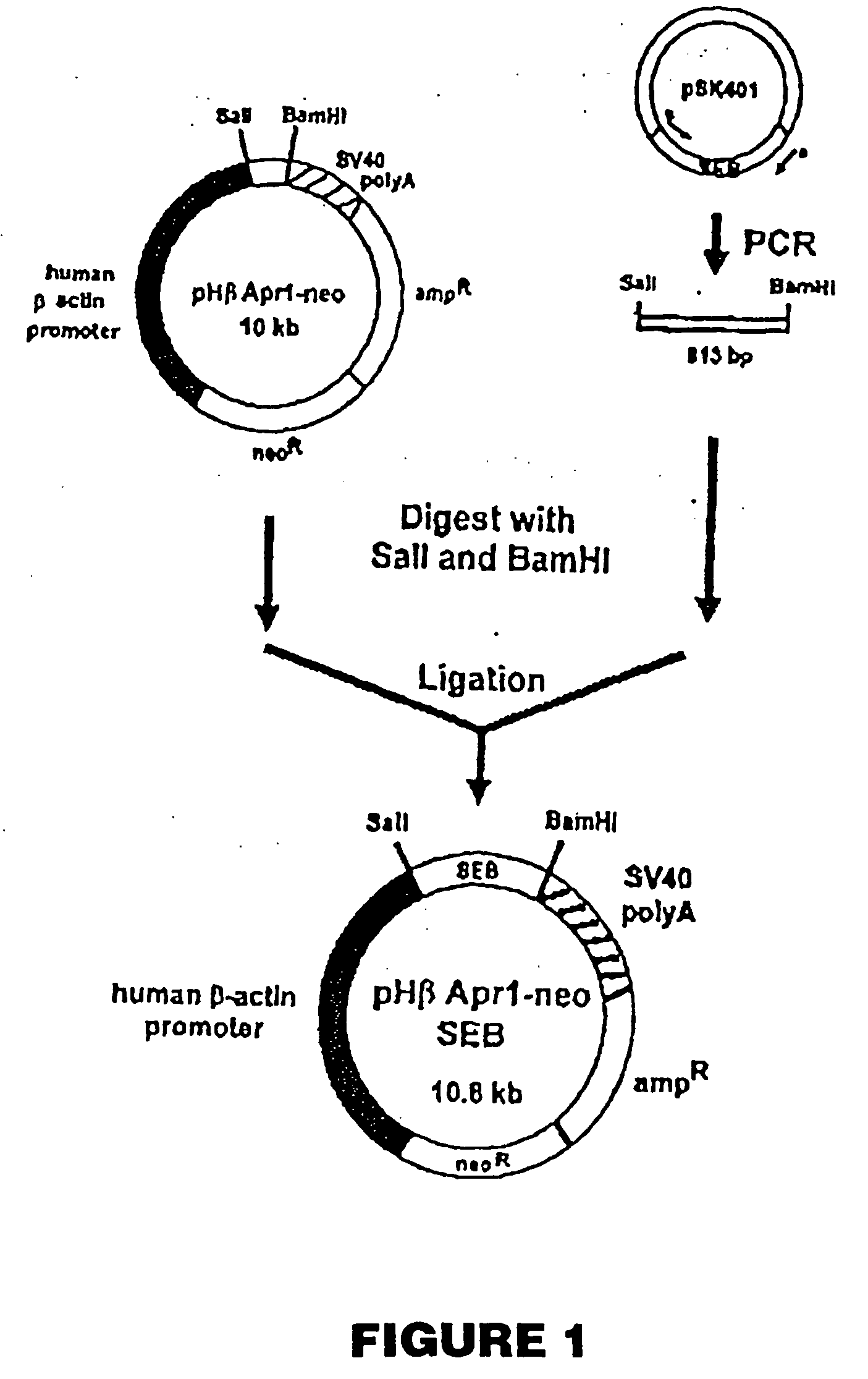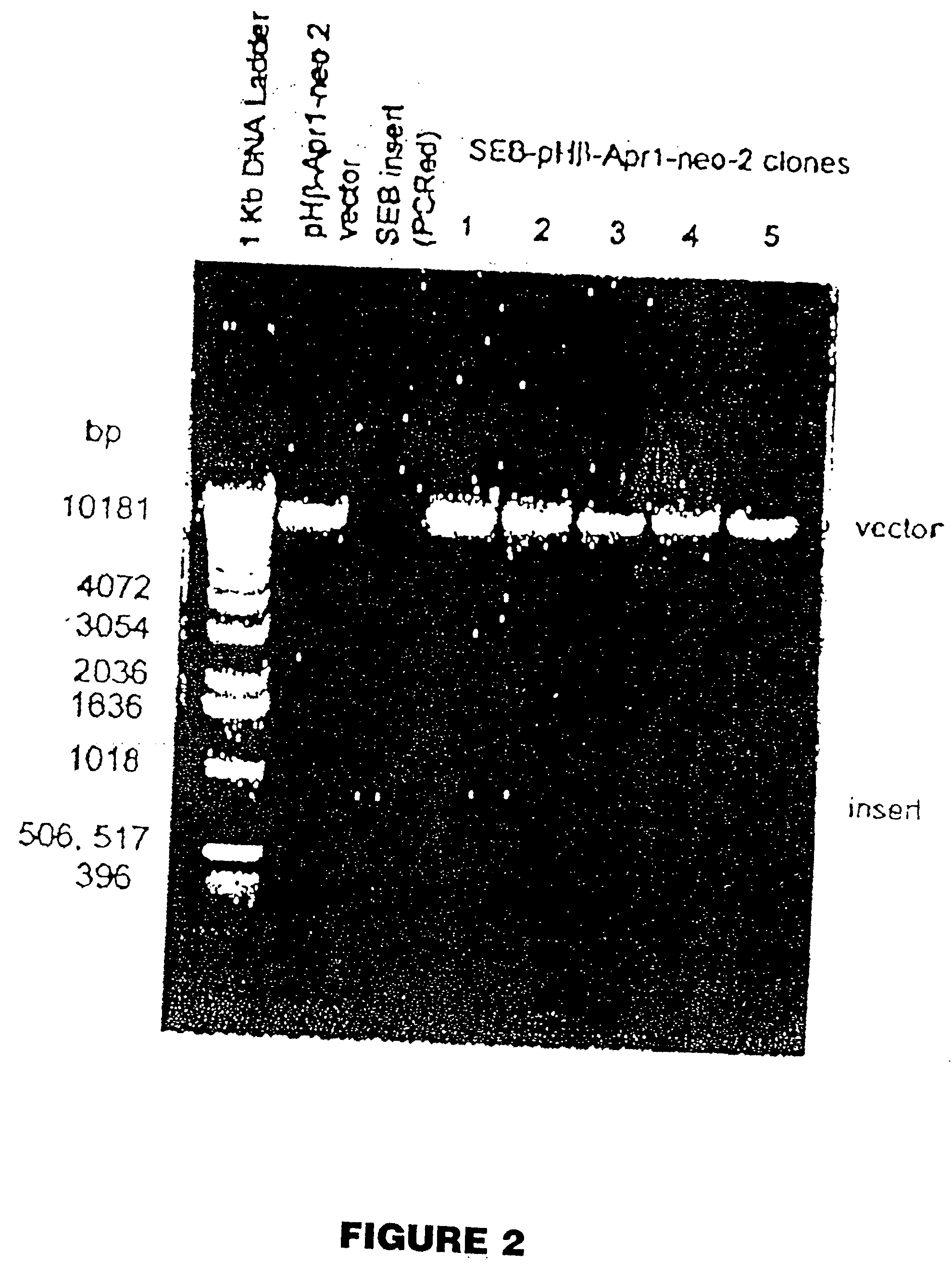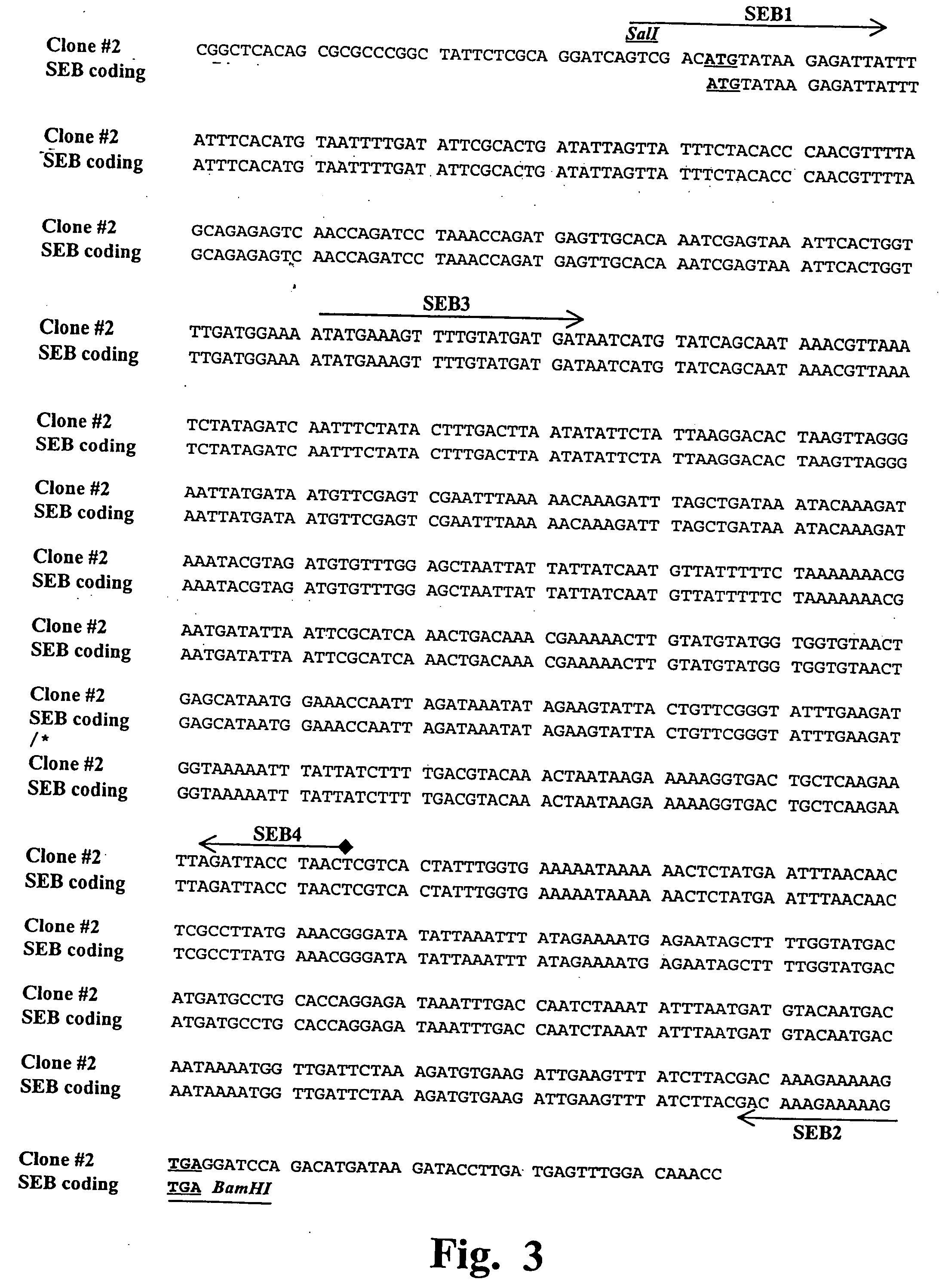Compositions and methods for treatment of neoplastic disease
a neoplastic disease and composition technology, applied in the field of compositions and methods for treating tumors and cancer, can solve the problems of inconsistent results, little or no effect, and inability to demonstrate unacceptable toxicity, and achieve the effect of high ifn production
- Summary
- Abstract
- Description
- Claims
- Application Information
AI Technical Summary
Benefits of technology
Problems solved by technology
Method used
Image
Examples
example 1
Preparation of Plasmids for Making DNA Templates for any Gene of Interest and the Process Transfection
[0389] Mammalian oncogenes, and genes for oncogenic transcription factors, angiogenic factors, growth factor receptors and amplicons as well as bacterial and SAg plasmids and DNA are prepared as described in the text references. When necessary, they are modified to forms suitable for transfection into mammalian tumor cells or accessory cells using methods well described in the art. (Old R W et al., Principles of Gene Manipulation, 5th Ed., Blackwell 1994).
[0390] As a representative SAg, enterotoxin B plasmid DNA is prepared by the method of Jones C L et al., J. Bacteriology 166 29-33 (1986) and Ranelli et al., Proc. Natl. Acad. Sci. USA 82:5850-5854 (1985) using the CsCl-ethidium bromide density gradient centrifugation of cleared lysates as described (Clewell, D B et al., Proc. Natl. Acad. Sci. USA 62-1159-1166 (1969)). S. aureus chromosomal DNA was isolated as described by Betley...
example 2
Cells Transfected with Nucleic Acids Encoding SAgs
[0536] Cultured VX-2 carcinoma cells were shown to retain their tumorigenic activity after implantation into New Zealand white rabbits. Progressive tumor outgrowth was observed over a 3 week period. Nucleic acid encoding SEB isolated and characterized by Gaskill et al, J. Biol. Chem. 263:6276 (1988) and Ranelli et al., Proc. Natl Acad. Sci. U.S.A 82:5850 (1985) were used to transfect tissue cultured VX-2 carcinoma cells using transfection methodology described in Example 1. Transfectants were selected using G418 and the survival of SEB-transfected VX-2 carcinoma cells was observed. In additional experiments, attempts were made to transfect murine 205 and 207 tumor cells with nucleic acid encoding SEB(the kind gift from Dr. Saleem Khan) and Streptococcal pyrogenic exotoxin A (the kind gift of Dr. Joseph Ferretti). Successfiil transfection of murine MCA 205 and B16 cells by nucleic acids encoding SEA and SEC2 was achieved shortly ther...
example 3
Naked SAg DNA and Cells Co-Transfected with SAg DNA and with Additional Nucleic Acid Encoding Anti-Tumor Motifs or Products
[0537] Nucleic acids encoding a SAg are injected in naked or plasmid form into a host with cancer as a means of activating T cells and initiating an anti-tumor response. They may also be used as a vaccine to prevent the occurrence or recurrence of tumor in a host. Under circumstances where it is desirable to activate CD4 cells to produce a TH-1 cytokine response the nucleic acid construct used to transfect cells contains immunostimulatory sequences such as unmethylated CpG sequences. Nucleic acids encoding SAgs may be co transfected into tumor cells together with nucleic acid encoding other constituents capable of promoting an anti-tumor response. A list of possible components of nucleic acid constructs for direct administration and / or transfection of tumor cells which are administered to the host is presented in Table II.
[0538] The nucleic acid construct or c...
PUM
| Property | Measurement | Unit |
|---|---|---|
| Fraction | aaaaa | aaaaa |
| Fraction | aaaaa | aaaaa |
| Composition | aaaaa | aaaaa |
Abstract
Description
Claims
Application Information
 Login to View More
Login to View More - R&D
- Intellectual Property
- Life Sciences
- Materials
- Tech Scout
- Unparalleled Data Quality
- Higher Quality Content
- 60% Fewer Hallucinations
Browse by: Latest US Patents, China's latest patents, Technical Efficacy Thesaurus, Application Domain, Technology Topic, Popular Technical Reports.
© 2025 PatSnap. All rights reserved.Legal|Privacy policy|Modern Slavery Act Transparency Statement|Sitemap|About US| Contact US: help@patsnap.com



